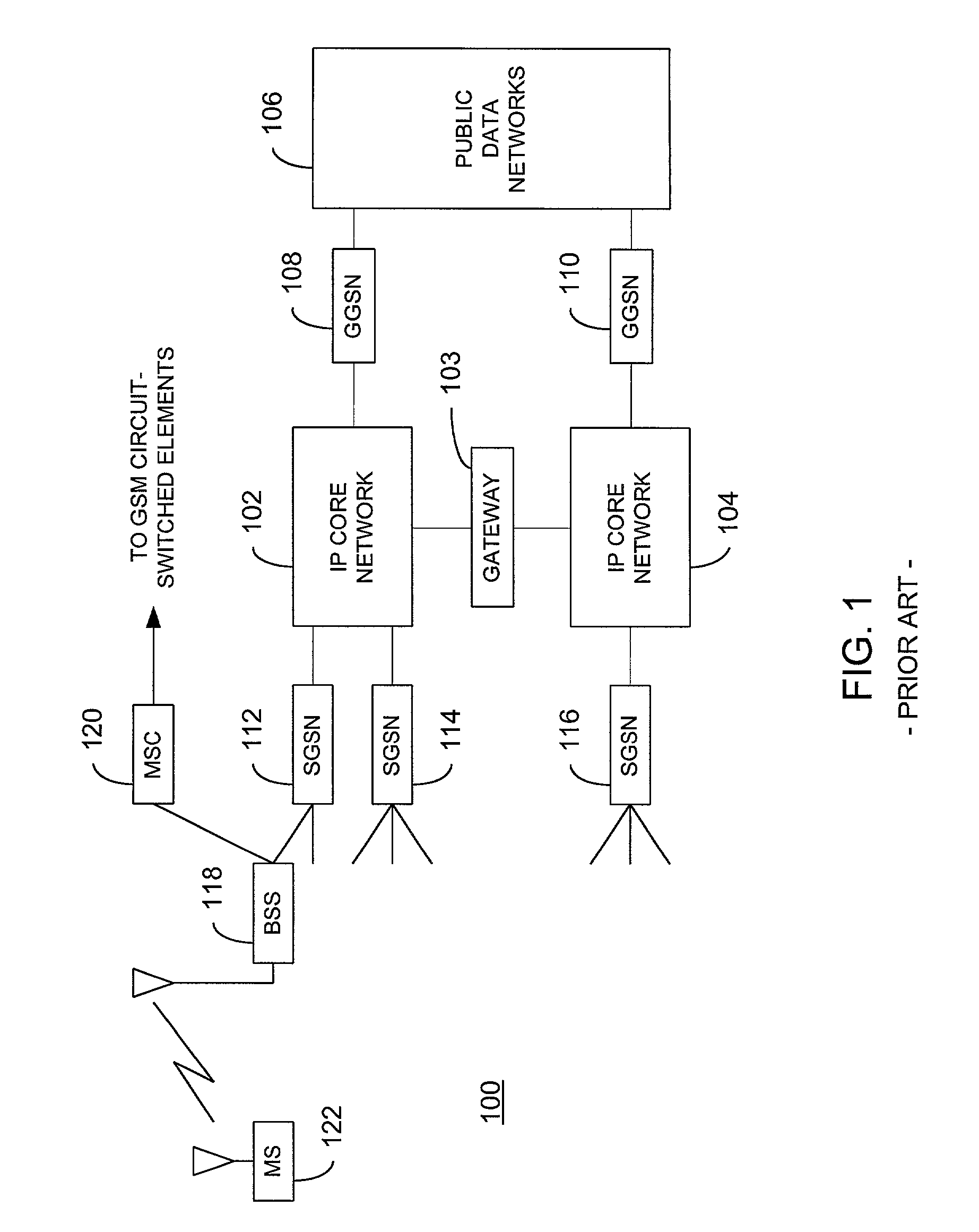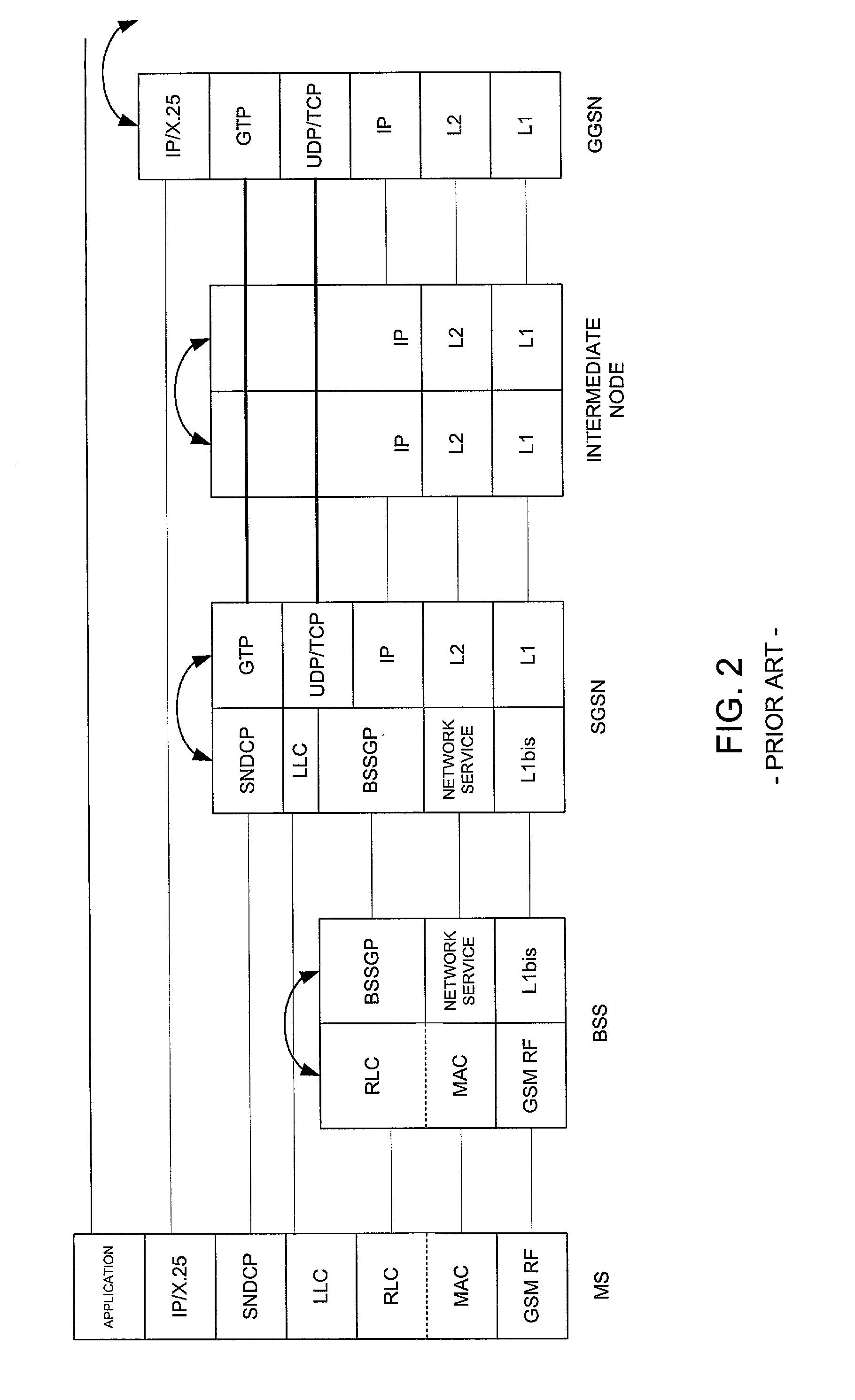Method and apparatus for communicating data in a GPRS network based on a plurality of traffic classes
- Summary
- Abstract
- Description
- Claims
- Application Information
AI Technical Summary
Benefits of technology
Problems solved by technology
Method used
Image
Examples
Embodiment Construction
[0016]The present invention may be more fully described with reference to FIGS. 3–4. FIG. 3 illustrates protocol stacks in accordance with the present invention. In particular, the protocol stacks of FIG. 3 are largely the same as those shown in FIG. 2, with the addition of multi-protocol label switching (MPLS) layers 302 to the GGSN, SGSN and intermediate nodes, and a Differentiated Services (DiffServ) layer 304 to the intermediate nodes. Note that MPLS 302 can co-exist with conventional GTP-TCP / UDP-IP stacks. As in FIG. 2, only a single intermediate node is illustrated for the sake of clarity. Implementation of the MPLS and DiffServ layers illustrated in FIG. 3 are well known in the art, as described in greater detail below. Generally, the layers illustrated in FIG. 3 are implemented using stored software routines executed by a suitably programmed processing platform, such as a personal computer, microprocessor, microcontroller, digital signal processor or the like or combinations...
PUM
 Login to View More
Login to View More Abstract
Description
Claims
Application Information
 Login to View More
Login to View More - R&D
- Intellectual Property
- Life Sciences
- Materials
- Tech Scout
- Unparalleled Data Quality
- Higher Quality Content
- 60% Fewer Hallucinations
Browse by: Latest US Patents, China's latest patents, Technical Efficacy Thesaurus, Application Domain, Technology Topic, Popular Technical Reports.
© 2025 PatSnap. All rights reserved.Legal|Privacy policy|Modern Slavery Act Transparency Statement|Sitemap|About US| Contact US: help@patsnap.com



